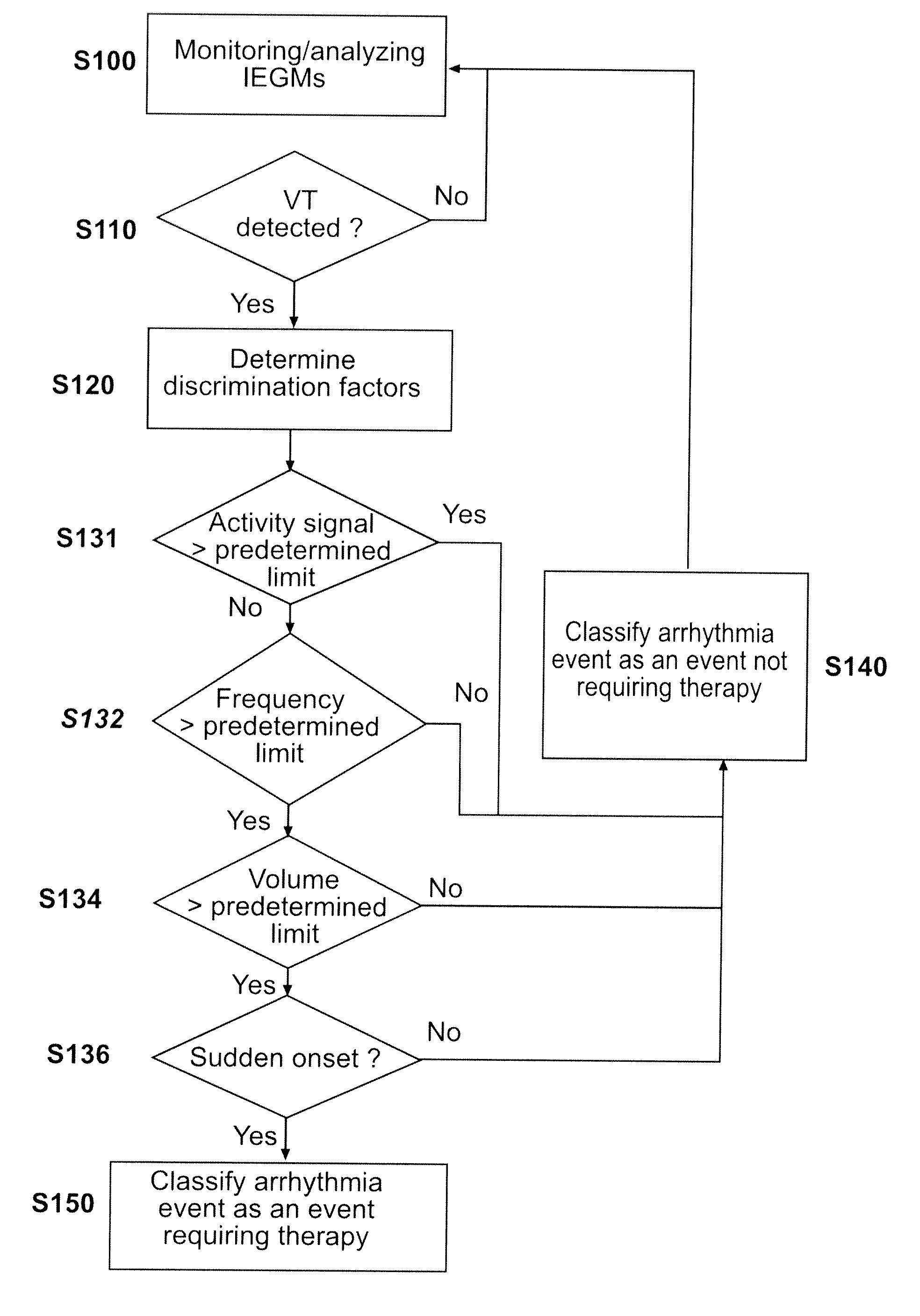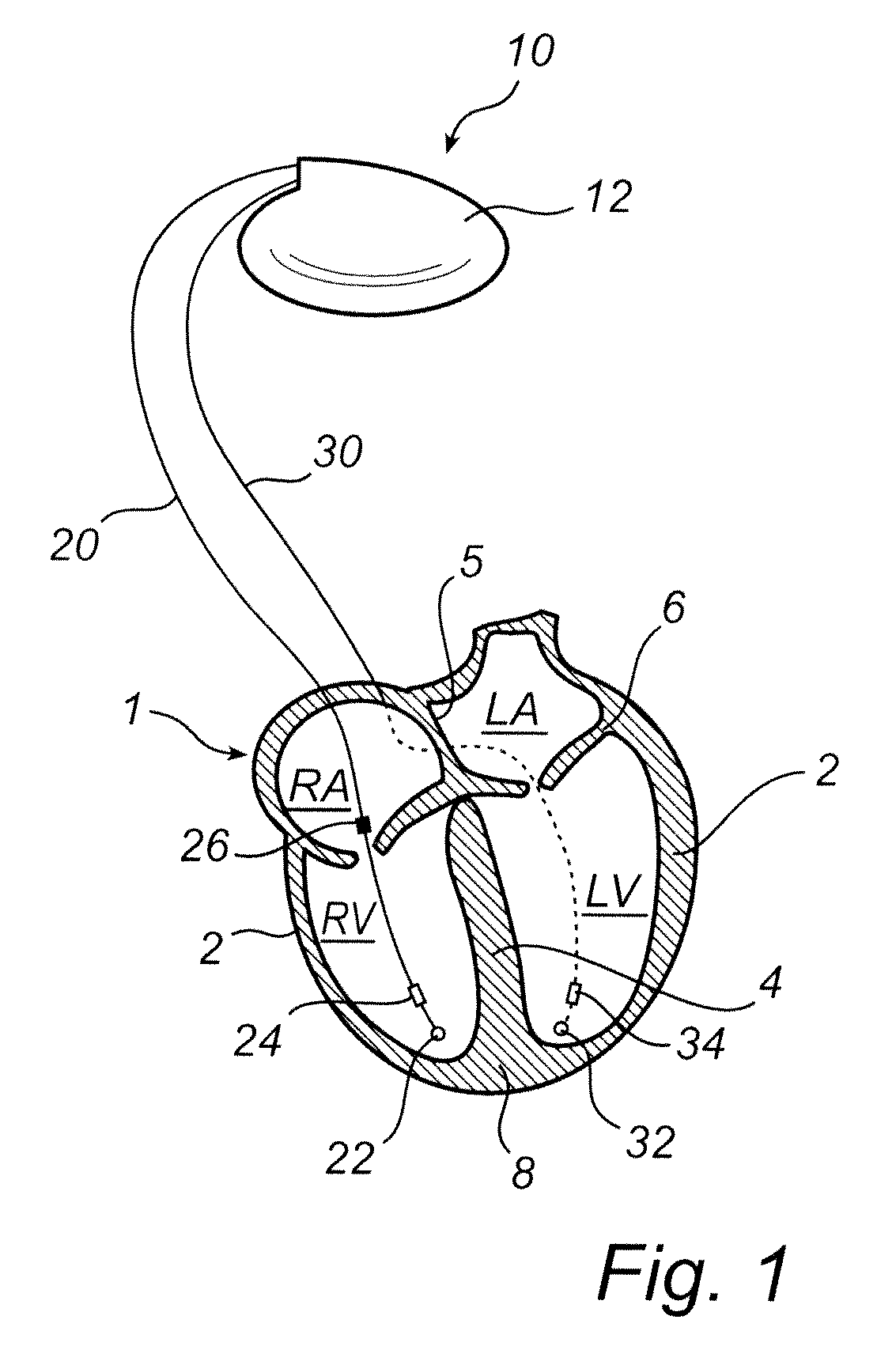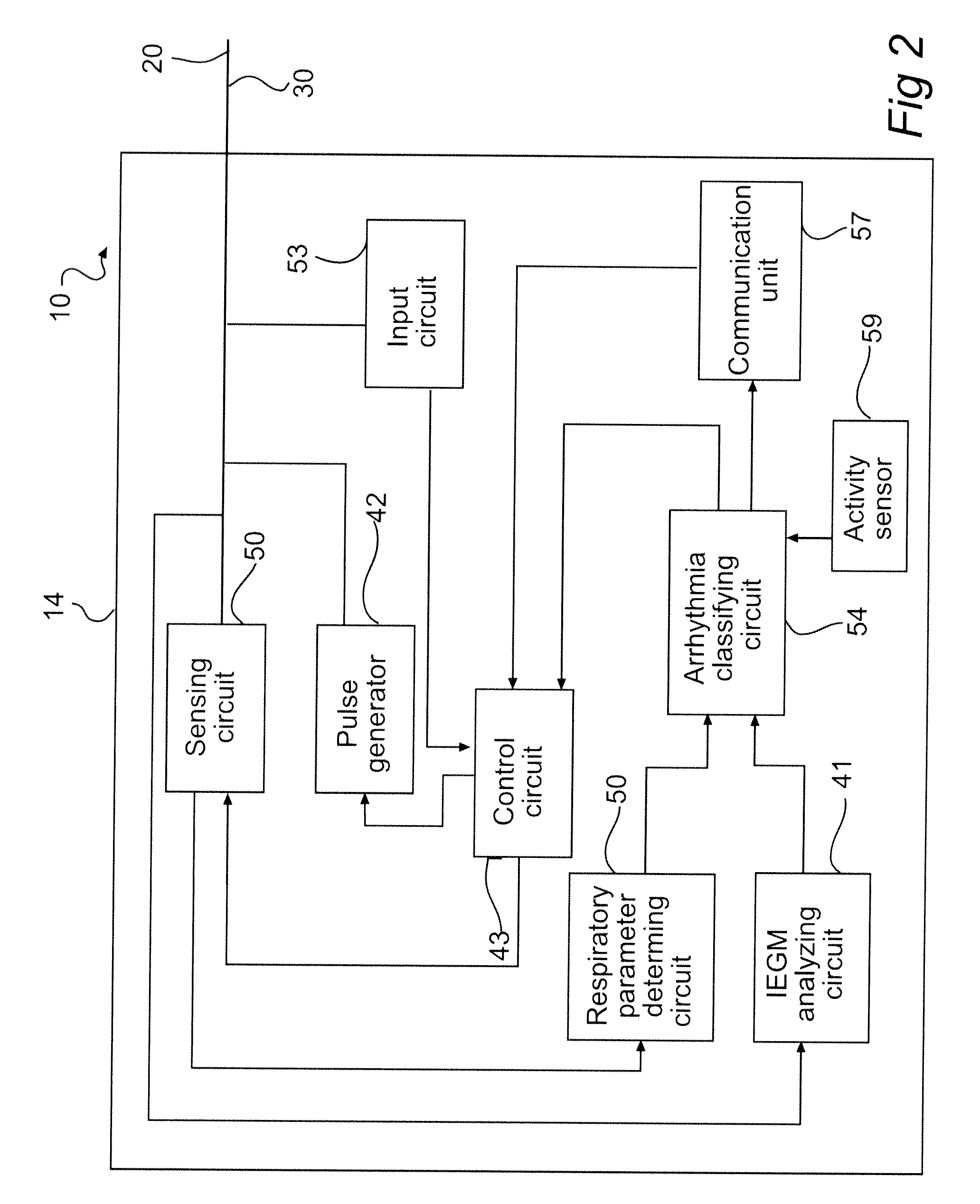Implantable medical device and method for classifying arrhythmia events
a medical device and event classification technology, applied in the field of implantable devices, can solve the problems of limited accuracy, delivered shocks constitute a significant source of physical and emotional stress and discomfort for patients, and are delivered inadvertently, and achieve the effect of high degree of accuracy
- Summary
- Abstract
- Description
- Claims
- Application Information
AI Technical Summary
Benefits of technology
Problems solved by technology
Method used
Image
Examples
Embodiment Construction
[0041]The following is a description of exemplifying embodiments in accordance with the present invention. This description is not to be taken in limiting sense, but is made merely for the purposes of describing the general principles of the invention. Thus, even though particular types of implantable medical devices such as implantable cardioverter defibrillators (ICDs) will be described, the invention is also applicable to cardiac stimulators such as biventricular pacemakers, dual chamber stimulators, etc. Moreover, the invention is applicable to cardiac stimulators such as biventricular pacemakers, dual chamber stimulators, etc. including a defibrillator element.
[0042]With reference first to FIG. 1, there is shown an implantable medical device for classifying arrhythmias according to an embodiment of the present invention. According to this embodiment, the invention is implemented in an implantable cardiac defibrillator 10 even though, as indicated above, the invention can be imp...
PUM
 Login to View More
Login to View More Abstract
Description
Claims
Application Information
 Login to View More
Login to View More - R&D
- Intellectual Property
- Life Sciences
- Materials
- Tech Scout
- Unparalleled Data Quality
- Higher Quality Content
- 60% Fewer Hallucinations
Browse by: Latest US Patents, China's latest patents, Technical Efficacy Thesaurus, Application Domain, Technology Topic, Popular Technical Reports.
© 2025 PatSnap. All rights reserved.Legal|Privacy policy|Modern Slavery Act Transparency Statement|Sitemap|About US| Contact US: help@patsnap.com



